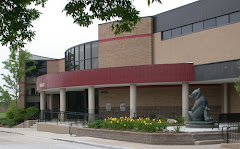 Frankenstein: a Cultural History, by Susan Tyler Hitchcock.
Frankenstein: a Cultural History, by Susan Tyler Hitchcock.It's been almost two centuries since eighteen year old Mary Wollstonecroft Godwin, soon to be Mary Shelley, penned Frankenstein after a nightmare-filled, storm-swept evening in a villa on the shores of Lake Geneva. Challenged by host Lord Byron to write a "ghost story," Mary's tale went on become a classic of Gothic literature, and her monster one of the best-known in all of horror history.
Susan Tyler Hitchcock's engaging study of the Frankenstein phenomena examines the roots of its enduring popularity and traces the branches of its many cultural iterations. From campy vintage television programming (The Munsters) to contemporary catch-phrases (cloning and stem cell research referred to as "Frankenstein" science), the Victorian monster still staggers through our modern world, and appears likely to do so for the foreseeable future. As Hitchcock writes in her introduction:
"Like myth and dream, Shelley's tale contains multitudes. A kaleidoscope in which the moral vectors shift with every viewing, the story of Frankenstein manages to balance contradictory views of human nature within one story. Frankenstein, the central character, is both hero and sinner; his creation is both a glorious accomplishment and a horror-filled crime. From this paradox the story derives its power, surging out from a short novel written by an English teenager in the early nineteenth century to become a universal symbol and a myth known around the world. This is our monster. To know him is to know ourselves."
This Halloween, spend some time with Frankenstein: a Cultural History, and get to know a classic monster.

No comments:
Post a Comment
Note: Only a member of this blog may post a comment.